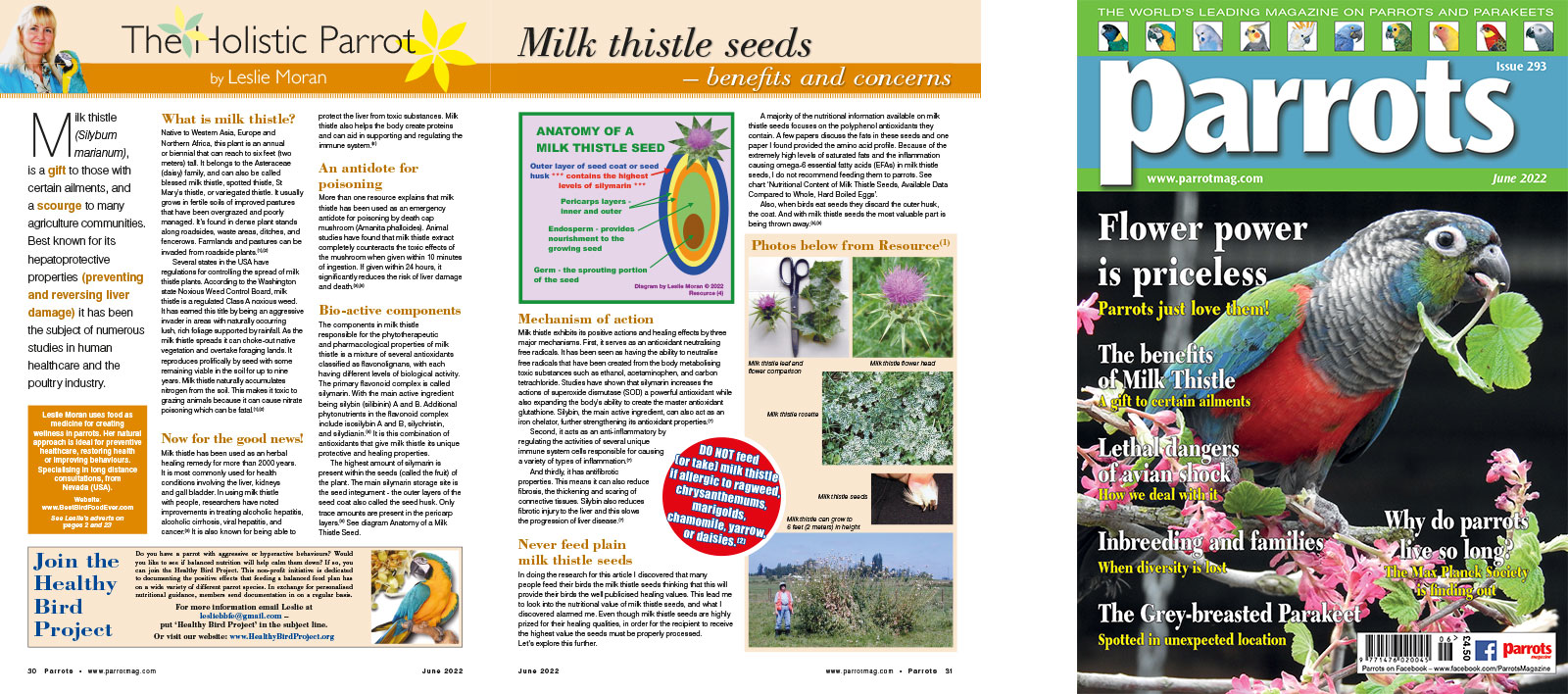
The Holistic Parrot by Leslie Moran
Milk thistle (Silybum marianum), is a gift to those with certain ailments, and a scourge to many agriculture communities. Best known for its hepatoprotective properties (preventing and reversing liver damage) it has been the subject of numerous studies in human healthcare and the poultry industry.
Native to Western Asia, Europe and Northern Africa, this plant is an annual or biennial that can reach to six feet (two meters) tall. It belongs to the Asteraceae (daisy) family, and can also be called blessed milk thistle, spotted thistle, St Mary’s thistle, or variegated thistle. It usually grows in fertile soils of improved pastures that have been overgrazed and poorly managed. It’s found in dense plant stands along roadsides, waste areas, ditches, and fencerows. Farmlands and pastures can be invaded from roadside plants.
Several states in the USA have regulations for controlling the spread of milk thistle plants. According to the Washington state Noxious Weed Control Board, milk thistle is a regulated Class A noxious weed. It has earned this title by being an aggressive invader in areas with naturally occurring lush, rich foliage supported by rainfall. As the milk thistle spreads it can choke-out native vegetation and overtake foraging lands. It reproduces prolifically by seed with some remaining viable in the soil for up to nine years. Milk thistle naturally accumulates nitrogen from the soil. This makes it toxic to grazing animals because it can cause nitrate poisoning which can be fatal.








Parrot Chat
Buyers Guides
Breeding articles